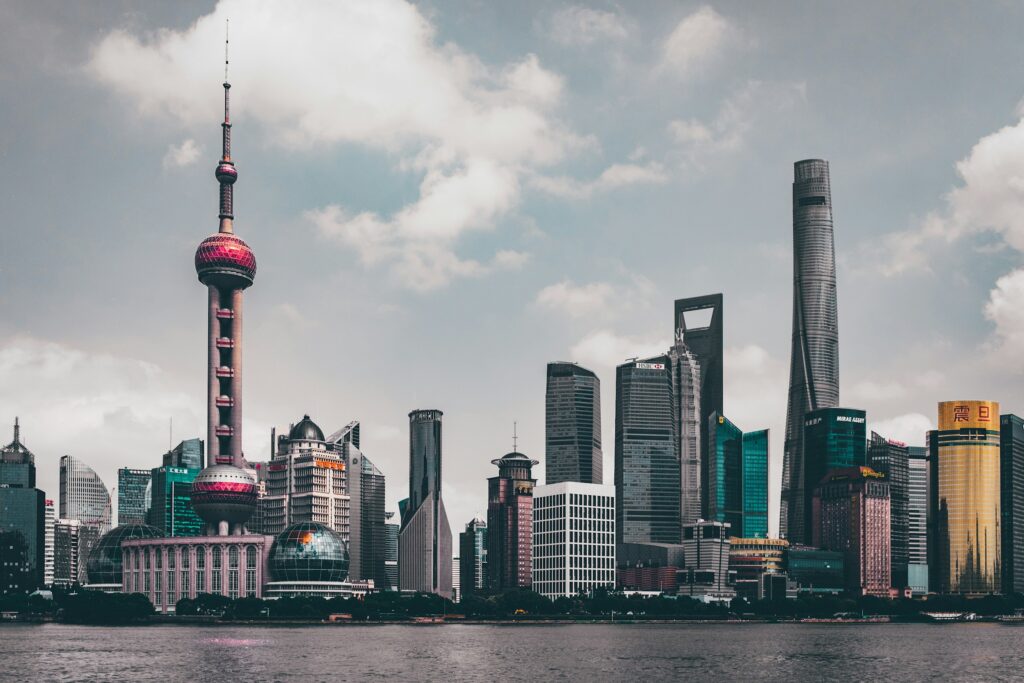China aims to be the world leader in the field of artificial intelligence (AI) by 2030. To achieve this goal, the government is massively promoting the development of deep learning models. One notable step in this direction is the support of open source AI initiatives by large technology companies such as Alibaba and Baidu.
The Language models Censorship plays an important role in China's AI strategy. DeepSeek, a Chinese AI chatbot, clearly demonstrates this. On sensitive topics such as the Tiananmen massacre, DeepSeek blocks responses or refers to limited capabilities. This is in line with the strict requirements of the Chinese government.
The international community is reacting with concern to Chinese AI applications. South Korea, Italy and Australia have already taken measures against DeepSeek. The reasons are concerns about data protection and national security. These reactions show the global tensions in dealing with Chinese AI technology.
Key findings
- China aims for global leadership in AI by 2030
- Promotion of open source AI initiatives
- Strict censorship for language models such as DeepSeek
- International concerns about data protection and security
- Complex relationship between business and politics in China
Influence of the Chinese government on AI development
The AI regulation in China clearly shows the extent to which the government is artificial intelligence influenced. This influence is particularly reflected in the censorship of language models.
Political motivations behind censorship
The "Golden Shield" project, known as the Great Firewall of China, was launched in 1998 and introduced nationwide in 2003. It is used to monitor and censor internet traffic in order to maintain political stability. The government uses this system to control access to information and minimize potential threats.
China is building a comprehensive digital surveillance system that not only monitors the present, but also enables predictions to be made about future behavior. By collecting biometric data such as facial recognition, the state can precisely identify and monitor individuals.
Cultural surveillance and its impact on AI
The Ethical AI development in China is strongly influenced by political interests. The government has published guidelines aimed at maintaining control over AI systems. These guidelines emphasize that AI systems must be controllable and trustworthy.
The close intertwining of politics, culture and technology is leading to an authoritarian surveillance state. By controlling AI content, the state is attempting to promote cultural homogeneity. This poses major challenges for developers and companies, as they have to ensure that their AI products comply with government regulations.
The Freedom of expression debate in China is heavily influenced by strict AI regulation. The development of AI systems must be in line with the state's political objectives, which can restrict freedom of innovation.
What are LLMs and how do they work?
Large language models (LLMs) are revolutionizing the world of AI. These Deep learning models process and understand natural language through intensive training with huge amounts of text data. The process requires enormous computing power to recognize linguistic patterns.
Basic principles of the major language models
LLMs are based on complex neural networks. These systems learn to recognize relationships in language and achieve human-like text processing. The technology makes it possible to learn from unstructured data and master demanding language tasks.
Training and data requirements
The training process for LLMs is data-intensive. The quality and variety of the training data directly influence the performance of the models. In China, companies such as Baidu face particular challenges due to government censorship regulations that restrict the selection of data.
| Country | The company | LLM development | Restrictions |
|---|---|---|---|
| China | Baidu, ByteDance | 238 AI models by 2024 | Strict censorship, Data management guidelines |
| West | OpenAI, Google | Faster development | Fewer restrictions |
Despite technological surveillance, Chinese companies are making progress. AI-supported LLMs have been publicly accessible since September 2023, but are subject to strict controls. This development shows China's ambitions in the AI sector, but also raises questions about the balance between innovation and state regulation.
Censorship measures in China and their objectives
The Chinese government is implementing strict censorship measures for AI systems. These regulations aim to control language models and enforce AI regulation. The Cyberspace Administration of China (CAC) has proposed new regulations for generative AI to make AI models "truthful and accurate".
Protection against harmful content
One of the main aims of the censorship measures is to protect against supposedly harmful content. The government demands that AI-generated content embodies basic socialist values and does not endanger the social order. Baidu's chatbot Ernie has already had to be adapted to meet these requirements.
Control of information dissemination
The strict regulations also influence the Freedom of expression debate. AI models in China need to be adapted so that they do not generate content that is considered subversive. The chatbot Ernie gives alternative answers to questions on sensitive topics such as the Tiananmen massacre or rejects the question altogether.
These censorship measures restrict the functionality and usability of AI systems. They impair the quality and diversity of the content generated and can limit the ability of AI to respond to various requests. The debate about Language models Censorship and AI regulation in China raises important questions about the balance between control and innovation.
Challenges in LLM development in China
The development of deep learning models in China faces unique challenges. The Cyberspace Administration of China (CAC) has introduced strict rules for generative AI. These require AI models to be "truthful and accurate" and embody socialist core values.

Technical barriers in the censorship process
Chinese AI companies such as ByteDance and Alibaba have to subject their models to strict government tests. These tests include the evaluation of responses to politically sensitive topics. To comply with censorship regulations, companies are developing sophisticated systems to replace problematic answers in real time.
Effects on the training data
The quality and variety of training data for AI models in China are severely limited by state control. Much of the data comes from state-controlled media or spam websites, which leads to distortions. These restrictions make it considerably more difficult to build powerful AI systems.
| The challenge | Impact |
|---|---|
| State censorship | Limited functionality of AI models |
| Data management guidelines | Limited variety of training data |
| Technological monitoring | Need for real-time filter systems |
Despite these obstacles, Chinese companies are developing innovative solutions. They are implementing real-time monitoring systems and security protocols to create competitive AI systems that meet government requirements.
Comparison of international approaches to AI censorship
The AI regulation varies greatly around the world. While China applies strict controls, Western countries use different methods. A look at the different approaches shows the diversity of approaches to ethical AI development.
European regulations and directives
In Europe, the Ethical AI development in the foreground. The EU Commission has presented guidelines that emphasize transparency and responsibility. These rules are intended to promote innovation and protect civil rights at the same time.
US perspectives on AI censorship
The USA takes a less regulated approach. Here, the focus is on industry self-regulation. Companies are encouraged to develop their own ethical standards to develop. This approach is intended to accelerate innovation, but also harbors risks.
| Region | Regulatory approach | Focus |
|---|---|---|
| China | Strict state control | Censorship and surveillance |
| Europe | Ethical guidelines | Transparency and responsibility |
| USA | Self-regulation | Innovation and competition |
These different approaches to AI regulation reflect the respective cultural and political values. While China focuses on control, Western countries emphasize democratic values in AI development. The global AI landscape is significantly shaped by these differences.
The role of companies in censorship
Chinese and foreign companies face different challenges when it comes to ethical AI development in China. The Technological monitoring and censorship significantly influence their strategies and decisions.
Chinese companies and their strategies
DeepSeek, a Chinese AI chatbot, implements a strict censorship system. For queries on politically sensitive topics such as Tiananmen or Taiwan, the model automatically replaces the answer with a security message. This strategy shows how Chinese companies are trying to drive innovation while complying with censorship requirements.

Foreign companies in the tracking dilemma
The situation is more complex for foreign companies. They have to perform a balancing act between market access and ethical standards perform. The transparency of the algorithms is often at odds with Chinese regulations. This dilemma forces companies to weigh up their global reputation against economic interests.
| The company | The challenge | Strategy |
|---|---|---|
| DeepSeek | Censorship requirements | Two-layer censorship system |
| Foreign companies | Ethics vs. market access | Individual customization |
The development of ethical AI in China requires a high degree of adaptability from companies. While Chinese companies like DeepSeek find innovative solutions within the censorship boundaries, foreign companies face the challenge of harmonizing their global standards with local requirements.
Ethical considerations on AI censorship
Ethical AI development in China is facing major challenges. The government has issued strict guidelines that restrict the freedom of developers. AI systems must be "controllable and trustworthy" and embody "basic socialist values". This raises questions about freedom of expression.
Freedom vs. protection
The Freedom of expression debate is in full swing. On the one hand, users are to be protected from harmful content. On the other hand, there is a risk of censorship. The Cyberspace Administration of China (CAC) is testing AI models for politically sensitive topics. Companies have to remove problematic data and maintain blacklists.
Corporate responsibility
Chinese tech giants such as ByteDance and Alibaba are facing a dilemma. They have to adapt their AI products to government regulations. At the same time, they want to remain competitive. Adhering to democratic values in AI development is difficult. Companies have to find a balance between innovation and control.
AI-generated content should embody basic socialist values and not jeopardize the social order.
The ethical challenges of AI development in China are enormous. It remains to be seen how companies and developers will deal with them.
Case studies on censored LLMs in China
The Language models Censorship in China is clearly demonstrated by specific examples. Chinese AI systems such as Deepseek's R1 often react cautiously or evasively to sensitive topics. This influences how users interact with the technology and what information they receive.
Practical examples of AI applications
One case shows how a Chinese LLM avoids questions about the Tiananmen Square protests. Instead, it steers the conversation towards innocuous topics. This Technological monitoring reflects the government's strict controls. It limits access to certain historical events.
Impact on users and society
The censorship of LLMs has far-reaching consequences. It shapes users' knowledge and opinions. Critical discussions are made more difficult, which restricts social discourse. The lack of transparency of the algorithms exacerbates this problem. Users often do not know what information is being withheld from them.
